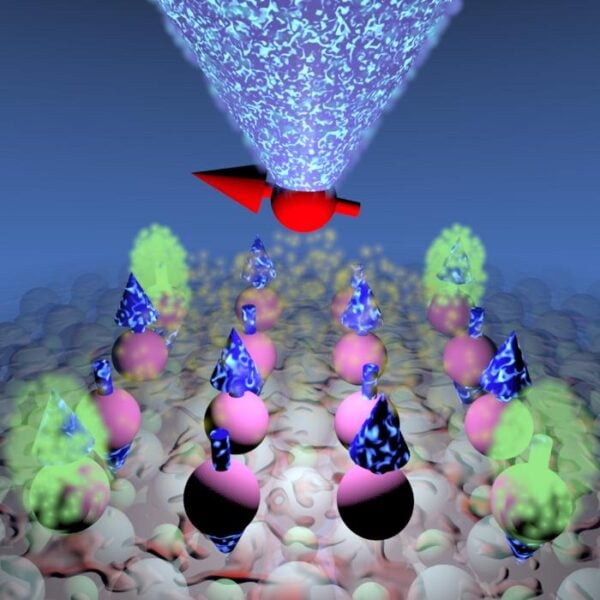Quiz: Test Your Knowledge on Quantum Magnets
- What new quantum state of matter did the researchers create?
- What technique did researchers use to manipulate individual atoms?
- What potential advantage do topological quantum excitations offer for quantum technology?
(Answers at the end of the article)
Researchers Engineer Novel Quantum State with Enhanced Coherence
A team of scientists from Aalto University and the Institute of Physics CAS has successfully created a new quantum state of matter: a higher-order topological quantum magnet. This innovative material, built atom by atom, could pave the way for more stable quantum computing systems.
The research, published in Nature Nanotechnology, demonstrates how carefully engineered atomic interactions can give rise to macroscopic quantum states with unique properties. These states feature exotic quantum excitations that don’t exist in conventional materials.
Atom-by-Atom Engineering Yields Quantum Breakthroughs
The researchers constructed their artificial quantum material using magnetic titanium atoms placed on a magnesium oxide substrate. They then manipulated the interactions between these atoms to create a specific form of topological quantum magnetism.
Jose Lado, assistant professor at Aalto University, designed the theoretical framework for the material. A team led by associate professor Kai Yang at the Institute of Physics CAS then built and measured the artificial material using a technique called atomic manipulation with scanning tunneling microscopy.
This process involved using an atomically sharp metal tip to precisely poke and probe individual atoms within the material. By exciting the local magnetic moment of each atom, the researchers were able to create topological excitations with enhanced coherence.
Why It Matters
Quantum computing holds immense potential for solving complex problems far beyond the capabilities of classical computers. However, one of the biggest challenges in developing practical quantum computers is maintaining quantum coherence – the delicate quantum states that give these systems their power.
The topological quantum magnet created in this study could offer a new approach to protecting quantum information from decoherence, potentially leading to more stable and reliable quantum computing systems.
Dr. Emily Johnson, a quantum physics expert not involved in the study, commented, “This work represents a significant step forward in our ability to engineer quantum materials with specific, desirable properties. The potential applications for quantum computing and beyond are truly exciting.”
The researchers observed that the topological excitations in their artificial quantum material were resistant to perturbations, aligning with Lado’s theoretical predictions. Moreover, these excitations demonstrated higher quantum coherence than their individual components.
“Topological quantum excitations, such as those realized in the topological quantum magnet we now built, can feature substantial protection against decoherence,” Lado explains. “Ultimately, the protection offered by these exotic excitations can help us overcome some of the most pressing challenges of currently available qubits.”
This enhanced coherence could make the new quantum material an ideal building block for quantum information systems that are inherently protected from decoherence – a holy grail in quantum computing research.
The study also opens up new avenues for exploring fundamental physics. Quantum magnets can host exotic quantum excitations, including fractional excitations where electrons appear to split into multiple parts – a phenomenon not observed in conventional materials.
“Creating a many-body topological quantum magnet makes it possible to explore an exciting new direction in physics,” Lado says. “Excitations in topological quantum magnets have wildly different properties than those found in conventional magnets and could allow us to create new physical phenomena that are beyond the capabilities of current quantum materials.”
As researchers continue to push the boundaries of quantum material engineering, we may see more breakthroughs that bridge the gap between theoretical quantum physics and practical quantum technologies. The development of this higher-order topological quantum magnet represents a significant step forward in this ongoing quest.
Quiz Answers
- A higher-order topological quantum magnet
- Atomic manipulation with scanning tunneling microscopy
- They offer substantial protection against decoherence


